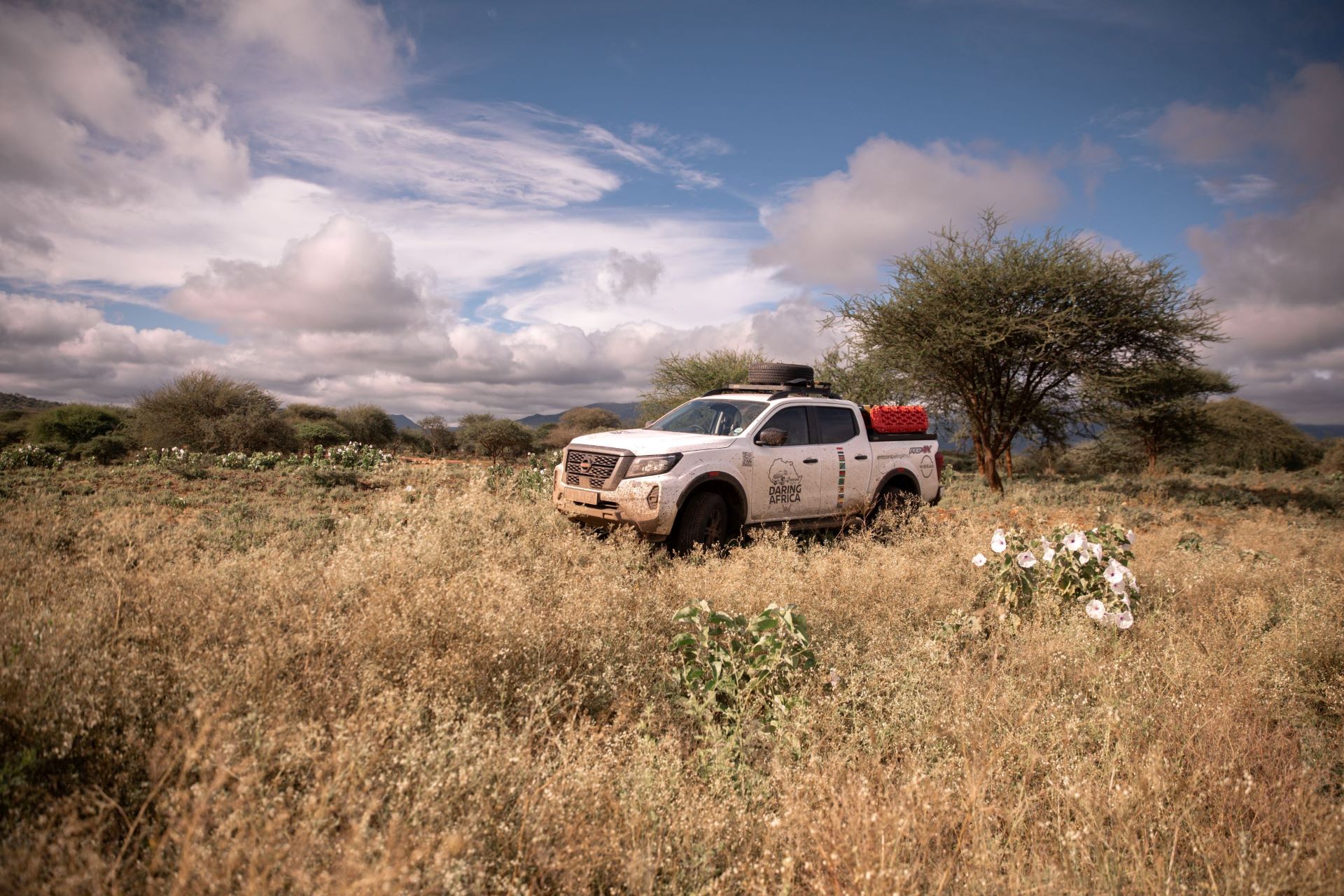-
Driving quality blends sporty, confident handling and sophisticated ride
-
Stiffer body structure and reduced vehicle weight delivers ‘light-yet-solid’ feel
-
Specially tuned Electric Power Assist Steering provides low-speed steering ease with more direct driver feedback at higher speeds
-
Setting new standards for small car NVH performance
October 2008 – Reducing fuel consumption and CO2 emissions was absolutely central to the powertrain development strategy for the new Fiesta. The results of these efforts make the Fiesta a compelling choice for environmentally aware drivers.
Duratorq TDCi – Better Than Ever
The state-of-the-art common-rail injection Duratorq TDCi engine features new technologies, enhanced fuel economy, lower CO2 emissions and improved performance. The 1560cc motor develops 66kW at 4000rpm and has a torque peak of 200Nm at just 1500rpm equating to a 0-100 acceleration time of 11.9 seconds and a top speed of 175km/h.
The diesel unit offers exceptional fuel economy with an urban cycle consumption of 5.2litres/100kms, a combined cycle consumption of 4.2litres/100kms and an extra urban consumption of 3.6litres/100kms.
The 1.6-litre TDCi incorporates significant calibration enhancements. It uses a Bosch control system with peak fuel pressure of 1600 bar. Detailed attention has been devoted to tuning the system’s interactions with exhaust gas recirculation, rail pressure and injection timing. This provides more refinement, especially at low speed and load levels.
Part of the improved refinement of the latest Duratorq engine is achieved through careful calibrations of the speed at idle. With the target of achieving a smooth, constant idle speed, Ford powertrain engineers devoted extensive attention to fuelling and timing calibrations. Rigorous testing was conducted with all grades of fuel to ensure that the engines would maintain smooth idle operation, simulating worst-case conditions.
The new diesel powerplant also features load-dependent idle speed. The engine control system senses high load factors, such as air-conditioning, and changes the idle speed accordingly. This system features intelligent controls to ensure that idle speed is kept as low as possible to minimise fuel consumption.
New Duratec Ti-VCT
The introduction of the Fiesta also sees the introduction of a 1.6-litre Duratec Twin Independent Variable Cam Timing (Ti-VCT) petrol engine to the range. The new motor produces 88kW at 6000rpm and has a torque peak of 149Nm at 4250 rpm. This sees the sporty model accelerate to 100km/h in just 9.9 seconds with a top speed of 193km/h
Despite its feisty character the 1.6-litre petrol mill remains frugal using just 7.9litres/100kms on the urban cycle, 4.7litres/100kms on the extra urban cycle and averaging 5.9litres/100kms on the combined cycle.
The third engine in the line-up is a 1.4-litre petrol motor that has a maximum output of 71kW at 5750rpm and a maximum torque output of 125Nm at 4500rpm. It willingly accelerates past the 100km/h mark in 12.2 seconds. Fuel consumption is frugal with an urban cycle figure 7.9litres/100km, a combined cycle figure of 5.9litres/100km and 4.7litres/100km on the extra urban run.
The new Fiesta also features carefully mapped accelerator pedal response calibration. The electronic throttle has been tuned to respond differently depending on how much and how sharply the throttle is applied. Aggressive throttle inputs generate a sharper, sportier response, while gentle throttle inputs deliver a smoother, progressive feel.
Stall Preventing
Cars like the new Fiesta are often the choice of new drivers. The Fiesta’s stall prevention system is one way in which the Fiesta makes it easier for beginners and drivers faced with stop-start traffic or challenging parking manoeuvres.
Stall prevention is a unique engine mapping profile to reduce the potential for the vehicle to stall when moving away from stationary. The system anticipates when the driver is going to pull away. When the clutch is engaged, the engine’s ignition profile is altered to increase the amount of available torque. Tuned for each powertrain derivative, it was developed based on typical car parking manoeuvres.
The anti-stall technology is absolutely seamless to the driver – whether novice or experienced – and makes the Fiesta easier to drive in city traffic, easier to manoeuvre into tight parking spaces and more pleasurable for all drivers.
Power Up – Emissions Down
Across the model range, the Fiesta combines an enhanced and efficient powertrain line-up with weight reductions to deliver better fuel economy and reduced CO2 emissions.
The new model is approximately 40 kilograms lighter than its predecessor and is also among the best in class for its small, 2.08 square metre frontal area and drag coefficient of 0.33. Similarly, while many competitors have grown taller with each new generation, the new incarnation has reduced in height by 36mm, versus the previous model.
The result is a projected range-wide CO2 average of 132g/km, a 1.3 percent improvement over the already efficient previous Fiesta.
Lean, Green Steering System
A key factor in the light, nimble handling of the new Fiesta is the introduction of full Electric Power Assist Steering (EPAS).
EPAS replaces the traditional hydraulic power-assist system of the previous-generation Fiesta, which required higher effort in low speed manoeuvres like parking and urban driving.
EPAS also delivers a noticeable reduction in real world fuel consumption by operating only when steering assistance is required and deactivating when not, thereby reducing the power it consumes from the engine and the fuel it requires. This compares favourably to a traditional hydraulic pump, which operates continuously once the car’s ignition is engaged.
Ford’s driving dynamics experts were aware that some EPAS systems compromise steering feel. Consequently, they devoted extensive effort to detailed tuning of the Fiesta’s EPAS system to ensure that it delivers the precise steering feedback expected from a Ford vehicle.
A key engineering challenge was to develop the EPAS system to reduce fuel consumption and CO2 emissions while maintaining Fiesta’s traditionally excellent feedback to the driver in higher-speed, handling situations. Here, extensive work was undertaken to achieve a fine, almost imperceptible transition between levels of assist and direct feedback from the road.
Much of the development time was dedicated to this intensive fine tuning of the EPAS system, on every type of road, from narrow city streets to twisty country roads. In total, steering development engineers accumulated over 50,000 kilometres of on-road testing.
Much of this work was done before prototypes even took to the road. Detailed steering optimisation took place with Computer Aided Engineering (CAE) calculations, simulations, steering rig tests and prototype vehicle tests, months before real world assessment and prove-out. Fine tuning was conducted subjectively in the vehicle, supported by CAE and simulation analysis. Overall, the CAE input to the new Fiesta saved 20 percent in vehicle dynamics development time, compared to previous vehicles.
The result is a unique EPAS system. Sophisticated speed mapping allows light steering at parking speeds and firmer steering at higher speeds, making the Fiesta feel natural, confident and easy to position on the road.
This is applied by using a vehicle speed sensor, which identifies the turning rate and angle of steering to determine the level of assistance offered. This helpful feature has then been tuned further by the engineering team for different powertrain options, due to the different weight loads put on the steering.
The Fiesta’s steering ratio has also improved over the outgoing car from 15:1 to 14.25:1, which creates a more responsive and direct feel and a tight 10.2 metre turning circle, perfect for maneuvering in tight spaces.
EPAS also features an additional pull-drift compensation, which helps cope with changes in road camber for easier driving. The pull-drift system continuously monitors the steering state and position of the front wheels, controlling drift automatically by making continuous, imperceptible adjustments to the force on the steering wheel.
Global Architecture
Whether it is a new Fiesta built in Cologne, Germany, Valencia, Spain, or Nanjing, China, it will have the same chassis architecture. However, in Ford’s global engineering approach, Fiestas around the world will be configured and tuned to suit regional driving conditions and customer preferences.
The key to delivering this was early engagement in research to understand fully the customer priorities and wishes in different markets. The engineering approach was to create a solid, proven base chassis architecture that would be appropriate for a range of different markets, yet readily tuned and adapted for regional differences.
Consequently, the Fiesta features the proven, independent MacPherson front suspension and a twist-beam rear suspension, refined and updated for the new car.
The rear suspension twist beam diameter has increased by 28 percent versus the previous-generation Fiesta, while the front suspension anti-roll bar diameter has increased to 22mm, from 19mm in the previous model. Ford engineers have also honed bushings, spring and damper rates – with these also set to be tailored for different regions.
Impact harshness reduction was a major target for Ford engineers. One significant example is the twist-beam pivot bush, which has been increased in size to soak up impact harshness.
The new twist-beam pivot bush uses a larger, more sophisticated design, with different rubber compounds for optimal performance, not only in static stiffness and comfort, but also dynamic performance such as steering precision and handling. It can also be tuned more readily for different markets, to absorb bumps and road harshness on poor surfaces. While slightly heavier in weight, this was considered an essential addition in a no-compromise global Fiesta.
Significantly Reduced Noise
The new Fiesta looks more sophisticated inside and out, and its driving refinement echoes that visual sophistication. It is set to raise the standard for small cars with its improved road, powertrain and wind noise isolation.
Noise, Vibration and Harshness (NVH) is known within Ford as ‘Sound Quality and Vibration’ (SQ&V) and the focus is on improving sound quality and minimising unwanted noise transmission for all vehicle occupants.
The SQ&V team worked closely with the design team from the outset, to eliminate any physical aspects that could lead to noise intrusion into the cabin.
One of the key areas of co-operation between the two teams was wind noise. To ensure wind noise was reduced to an absolute minimum inside the cabin, all potential wind noise sources were assessed at the component level first and then at the vehicle level. This allowed areas of potential weakness to be corrected even before the first prototype was built.
Three-dimensional software tools were used in developing the Fiesta’s body structure. The use of these advanced digital engineering tools allowed SQ&V engineers to evaluate the whole car structure and identify easily and rectify any potential noise, vibration, or harshness transmission. This process also allowed SQ&V engineers to view the latest development levels of components in real time, thereby quickening the pace of overall development and allowing far more time for tuning and optimisation.
This up-front work helped ensure that traditional NVH sound package elements, like seals, fitted correctly from the outset – even on the very first prototypes. Consequently, the Fiesta’s sealing system is improved significantly and is expected to be best-in-class for overall performance.
Key contributors to this quiet and refined performance are double door seals to isolate road noise and fully encapsulated glass.
Transmission of powertrain noise throughout the Fiesta’s body structure has also been reduced by improved sound absorption, body structure improvements and a secondary bulkhead that reduces noise in the cabin.
Particular attention was paid to refinement of the increasingly popular Duratorq TDCi diesel models. Specific powertrain noise reduction techniques deployed for these models include:
-
Special dense cloth insulator under the bonnet to absorb sound
-
Plastic under tray to engine bay to reduce noise transmission externally and into the cabin
-
Extra sound deadening material on the bulkhead
-
Extra sound deadening material within the rear quarter trim and B-pillar
-
SQ&V-optimised engine calibration


